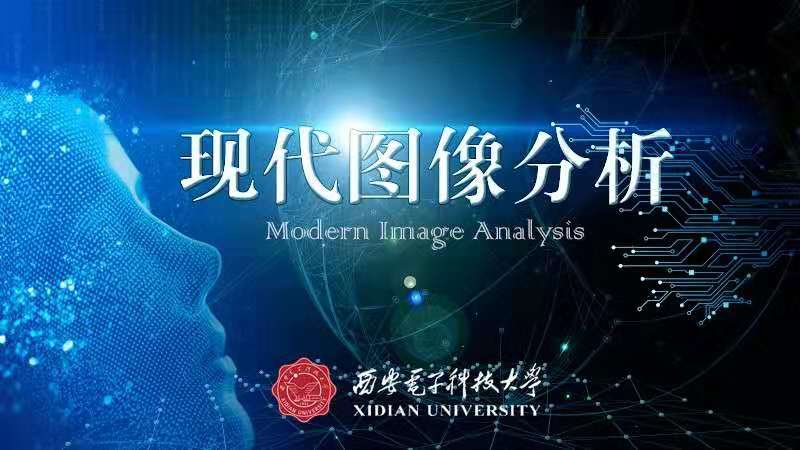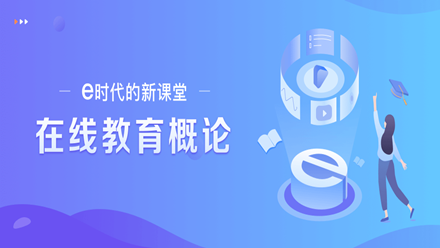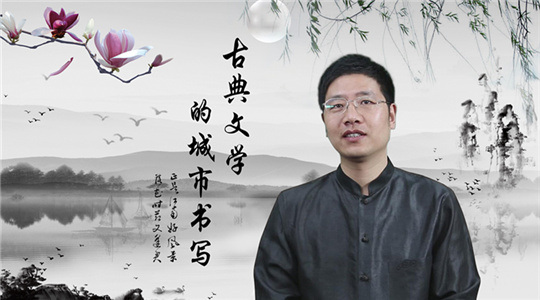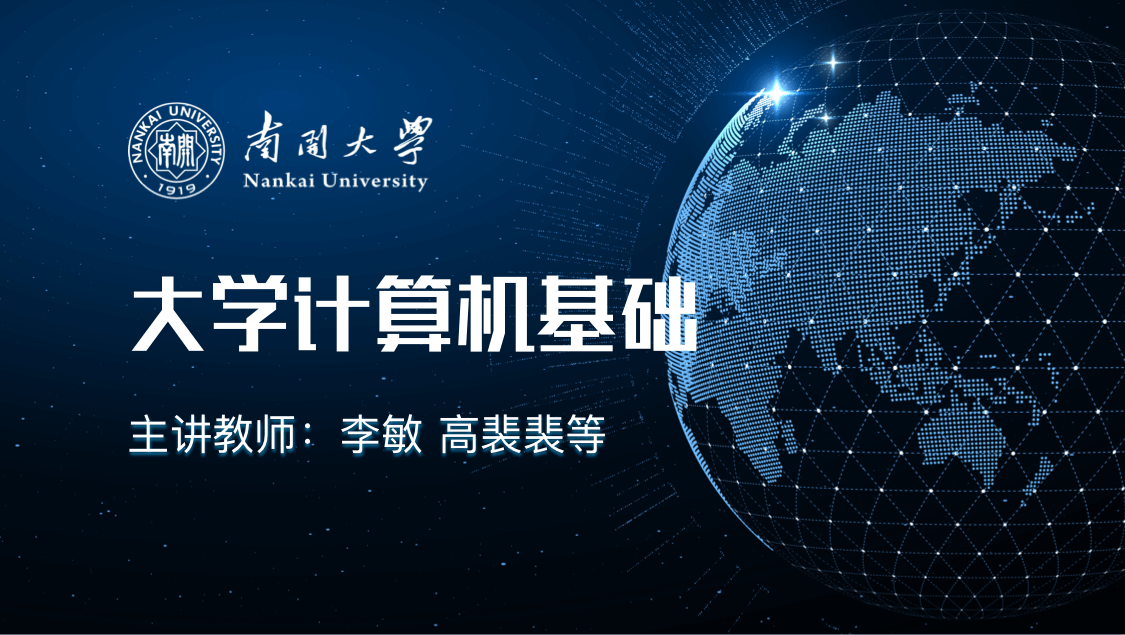
当前课程知识点:e时代的新课堂——在线教育概论 > 第三章 高校在线教育进行时 > 3.4.1关键细节一 > 3.4.1关键细节一
各位老师大家好
Hello, everybody.
我是清华大学的于歆杰
I'm Yu Xinjie from Tsinghua University.
这一小节呢是在整个这个课程里
This section is a very important part of
非常重要的一小节
the whole course.
我们将要讨论混合式教学的一些
We will discuss some key points
关键细节
and common misunderstandings with
和常见误解
blended teaching.
我会讨论三个细节
I will talk about three points
会介绍四个误解
and four misunderstandings today.
首先我们来说第一个
Firstly, let's talk about the first point.
混合式教学是需要把资源 工具和方法
Blended teaching requires a good combination of
进行很好的整合的
resources, tools and methods.
这里面的资源可能包括
The resources may include
你或者别人制作的慕课或者spoc资源
MOOCs or SPOCs made by yourself or others,
也包括你从各个地方找来的
as well as all kinds of elaborate microlectures
各种精美的微课资源
that you can collect from various places.
这里面的的工具可能包括spoc平台
Tools may include SPOC platforms
可能包括雨课堂等现代的
and many modern lightweight smart teaching solutions
轻量级智慧教学解决方案
like the Rain Classroom.
这里面的方法包括是
Methods may include
翻转课堂 混合式学习等教学方法
Flipped Classrooms, blended learning and many other teaching methods.
这些事儿都是现代的先进的
All these components are modern and advanced,
但是怎么跟我课堂教学进行整合呢
but how can we integrate them into our classroom teaching?
那接下来
Next, let's look at
各位在屏幕上看到的这个大圆图
the big circle diagram on the screen,
我们就给出了这一种整合的模式
showing us an integrated method.
也就是说什么呢
In other words,
在混合式教学里面
with the blended teaching method,
我们鼓励老师让学生用慕课资源
lecturers are encouraged to use MOOC resources as teaching materials,
做学习内容 做教学内容
and students can use MOOC resources as learning materials.
当然了白纸黑字的教材依然是适用的
Of course, textbooks are still applicable,
只不过幕课资源和教材是一个配合
but they should be used in combination with MOOC resources.
我们也鼓励老师用spoc平台
Teachers are also encouraged to use SPOC platforms,
或者用雨课堂工具
and tools like the Rain Classroom,
来丰富和发展教学手段和教学环境
to enrich and develop their teaching methods and teaching environment.
当然了教室实验室PPT投影黑板
Of course, classrooms, labs, slide projectors and blackboards
这依然是适用的
are still applicable.
这两个
The two aspects
左下角和右下角都是基础
shown in the lower left and lower right corners of the diagram both form the foundation of blended teaching.
能实现混合式教学非常重要的
One of the crucial aspects in achieving blended teaching
是在教学方法上要实现翻转课堂
is adopting a Flipped Classroom as a teaching method.
那具体来讲怎么来实现
Then how do we blend the
课前课上和课后的整合呢
before-class, in-class and after-class sections together?
那你作为老师你对你的学生是了解的
As a teacher, you should know your students.
你知道他们的认知基础
You should know their cognitive foundation.
所以你就需要根据课程要求
Then based on the course requirements
根据学生的基础
and students' learning foundation,
布置相应的预习任务
you can provide them with relevant preview tasks,
让他们在上课之前
so that before class,
拿着手机用微信进入雨课堂公众号
they can use their cellphones to enter the Rain Classroom's official account on WeChat
来预习若干个慕课视频
and preview several MOOC videos.
当然从根本的意义上来讲
Of course, fundamentally,
这么干和你布置学生去看
it will make no difference if you ask students to
教材的第三章和第四节
read the textbook content,
是没有什么区别的
such as the third and fourth chapters.
它都是在学习
After all, whether they use cellphones or textbooks,
拿着手机学是在学看教材学也是在学.
they are learning all the same.
但这二者对于你课堂组织翻转课堂来说
But how students prepare for lessons will make a great difference to
区别非常大
your organization of the Flipped Classroom during class.
你让学生去学教材第三章第四节
If you ask them to preview the third and fourth chapters in a textbook,
他们可能学可能不学
they may or may not do that.
你作为老师你怎么知道谁学谁没学
As the teacher, how can you know who have completed the preview task and who haven't?
你不知道
You can't know that.
你就是在课堂里问一下
You can only ask them in class
预习的同学举一下手
and ask those who have completed the task to raise their hands.
举了手又怎么样呢
However, you won't know anything, even if they do raise their hands.
你没有什么手段
You have no way of knowing their learning situation.
但是你采用刚才这种模式
But if you adopt the above method
来布置预习的话
of giving them a preview task,
你在上课之前就能知道
you can know before class
每一个学生的预习情况
how each student has prepared for your lesson.
这个案例我在此前那一讲里说到了
I've talked about this case in the previous section.
那你拿到这些数据以后
So what can you do
你能做怎样的事呢
after you obtain this data?
当然这里面各个不同老师
Of course, different teachers
所处理的方法不一样
deal with data in different ways.
比如说如果说你是一个小容量班级
For example, if you are teaching a small class
你这屋就坐着二三十人
consisting of 20 to 30 students,
你就是完全翻转课堂
you can just organize a Flipped Classroom.
就让他们在教室里完全的讨论
You can allow your students to discuss throughout the entire class,
你不讲课了
and then you won't need to explain anything to them.
那你现在怎么能使得讨论更有针对性呢
Next, how can you make their discussions more targeted?
你不是知道所有学生的预习情况吗
Since you know how each student has completed the preview task,
一定知道有的学生基础很好
you should know that some of them are good learners
而且很投入学习
and devote a lot of time to their studies.
所以你能够通过雨课堂给你的反馈
So through the feedback from the Rain Classroom,
你能知道
you can know that
他们课前花了很长时间
they spent a lot of time on
来看你的预习任务
the preview task you gave them.
时间你能知道
You can know how much time they spent on it.
如果说你在课外预习里还布置了练习题
If you include exercises in the preview task,
你能知道他们做题正确率也很高
you can know that they usually answer the questions correctly.
这些学生对你学习很重视
These students pay a lot of attention to your course.
那他们来参加你的课堂讨论
So when they participate in your classroom discussions,
最常见的想法是什么呀
the most common thought they have is:
是说这老师的课我还有必要去听吗
"Shall I attend this lecture,
我都学明白了
since I've already learned everything myself?"
所以于是呢
Therefore,
你在课堂上就一定得问他们那些
you should ask them
有挑战性的问题
some challenging questions in class,
让他们觉得说
so that they can discover
原来我觉得我学挺明白
that even though they think they've already learned everything,
但是这老师这问题还蛮厉害的
the teacher's questions are rather complex
容易出错
and easy to make mistakes.
我跟着这老师能学到慕课视频
Since and that they can learn something from the MOOC videos,
能学到教材里没有的东西
something can't learnt fromor out of the textbook.,
我愿意跟这老师学
Tthey will be more willing to attend your lectures.
这是第一类 你能知道
These students belong to the first type of students.
第二类说你一定知道有的学生
The second type of students, as you know,
很愿意投入学习
love to study
他花了很长时间看
and have spent lots of time on the preview task,
但是他预习效果并不好
but their work isn't very effective.
比如说你给他布置了三个题
For example, you give them three questions,
他可能只做对了一个或者两个
but they can only answer one or two correctly.
那对于这类学生来讲
What measures can you take to help
你能采取的措施是什么呢
this type of students?
因为他们往往在上课之前在想
Before class, they usually think:
这老师课我还敢去听吗我还能去听吗
"Can I attend these lectures anymore?
我预习都学不明白
I didn't complete the preview task very well.
这老师上课我还能听懂吗
Will I be able to keep up with the lecturer during class?"
所以你在课堂上就一定得问他们
So in class, you should ask them
特别简单的问题
very easy questions
让他们一定能答得上来
which you know they can answer correctly.
让他们觉得说
Then they will find,
原来我觉得我挺笨的
although they think they're stupid before,
但是这老师问题我能答得上来
but they can still answer the lecturer's questions correctly.
我愿意跟着这老师学
In the end, they will be more willing to attend your lectures.
当然你一定还会知道有的学生他
Of course, as you know, some students
课外也不花时间学
don't spend much time on their studies outside of class,
做题也在瞎做
and don't takeor actually bother doing the exercises seriously.
那对于这类学生
To teach this type of student,
你在课堂上得问他们什么问题
you should ask them questions
你就得问他们一定答不上来的问题
that they can't answer during class.
让他们觉得亏了
Then they will feel frustrated,
这个亏既表现在小容量班级
because they feel embarrassed in front of
在小伙伴面前丢了面子了
their classmates in small classes,
也表现在对期末总成绩受影响
and worry that their final grade will be influenced.
所以你就会发现
Finally, you will find
如果说你把资源 工具和方法
that if you well blend various
进行很好的整合的话
resources, tools and methods together,
你在课堂上
you can raise more targeted questions in class
就能够针对每一个学生不同预习情况
according to each student's completion of
提出有针对性的问题
the preview task.
当然学生他觉得压力比较大
Although students feel more stressed when using this method,
他觉得收获也比较大
they will get more out of your course,
让他在单位课内学时里
because during class,
思维活跃水平提高了
they will be thinking more actively
学习成效提高了
and studying more effectively.
我们管这种模式
We describe this method as
叫让学生带着脑子来上课
"students coming to class with their brains.".
这是我觉得非常重要的第一个细节
This is the first point which I think is very important.
-混合式教学该怎么做?与清华老师一起聊聊
-看清华老师如何进行大班混合式教学
--Video
-如何做好混合式课堂的互动
--Video
-与清华大学老师聊聊慕课独特的教学设计
-“挑战60s”授课短视频大赛
--Video
-与清华大学老师聊聊慕课的制作与运营
--Video
-1.1在线教育发展现状
--html
-1.1.1在线教育带来了e时代的新课堂
-1.1.2师生说
--1.1.2师生说
-1.1.3我国在线教育的特点
-1.2什么是在线教育
--html
-1.2.1概念解析
-1.2.2教育的技术发展史
-1.2.3在线教育的五要素模型
-1.3在线教育对教师的机遇与挑战
--html
-1.3.1机遇篇
--1.3.1机遇篇
-1.3.2挑战篇
--1.3.2挑战篇
-1.4在线教育发展的历史
--html
-1.4.1二十世纪的发展
-1.4.2二十一世纪的发展
-1.4.3在线课程三要素
-1.4.4虚拟教育组织
-1.5课程内部体系和外部关系
-第一章 解读在线教育--单元习题
-讨论题
-2.1数字时代带来教育变革
-2.2在线教育更适应学生的学习需求
--html
-2.2.1教育需求的发展
-2.2.2学习风格与学习类型
-2.2.3多模态数据分析学生学习行为与需求
-2.2.4教育目标
-2.2.5拓展学习时空,促进深度学习
-2.2.6自主学习系统的案例分享
-2.3在线教育帮助教师成长
-2.4学校和国家为什么要做在线教育
-单元习题--作业
-3.1高等学校在线教育发展
-3.1.1学校现状
-3.1.2平台与联盟
-3.2不同类型的教师都能得益于混合式教学
-3.3混合式教学的好处
-3.3.1当前的教学问题
-3.3.2教师和学生的收益
-3.4混合式教学的关键细节与常见误解
-3.4.1关键细节一
-3.4.2关键细节二
-3.4.3关键细节三
-3.4.4误解篇一
-3.4.5误解篇二
-3.5智慧教学工具的发展
-3.5.1综述篇
--3.5.1综述篇
-3.5.2雨课堂的诞生
-3.5.3雨课堂的功能
-3.5.4课堂教学需要雨课堂
-3.5.5雨课堂解决面授时间紧张的问题
-3.5.6雨课堂解决课前课中课后的学习效果问题
-3.5.7课前课中课后雨课件设计要点
-第三章 高校在线教育进行时--单元习题
-讨论题
-讨论题
-4.1教育实践的展望(一) 教育创新
-4.2教育实践的创新(二) 教育技术与决策
-4.3教育理论的热点趋势
-第四章 在线教育的未来--单元习题
-讨论题
-5.1邓俊辉老师《数据结构》与《计算几何》教学案例
--html
-5.1.1慕课制作与使用心得(一)
-5.1.2慕课制作与使用心得(二)
-5.2张瑜老师《思想道德修养与法律基础》教学案例
--html
-5.2.1教学理念与混合式教学的主要环节
--Video
-5.2.2章节实例
-5.3杨芳老师《大学英语》教学案例
--html
-5.3.1混合式教学设计心得
-5.3.2 University单元教学设计
-5.4于歆杰老师《电路原理》教学案例
--html
-5.4.1小容量班级完全翻转课堂
-5.4.2大容量班级部分翻转课堂
-5.5郑莉老师《C++语言》教学案例 雨课件样例及校内教学心得分享
--Video
-单元习题--作业










